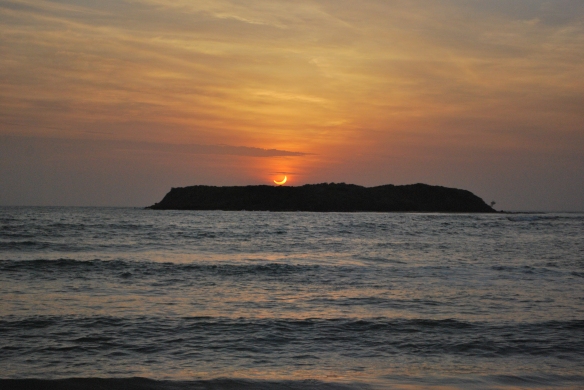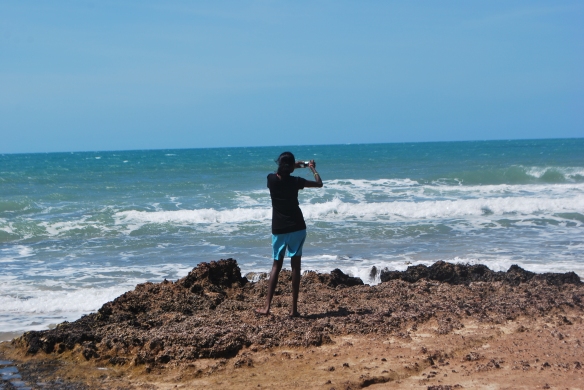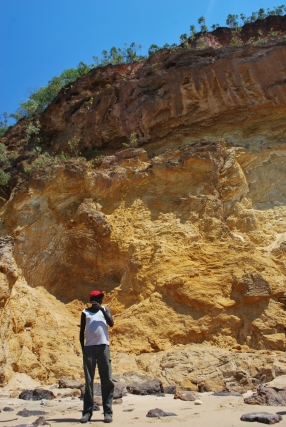The release of the draft report of the NT government’s review of Indigenous education has generated a lot of alarm in remote Indigenous communities. Yet again Aboriginal people have been singled out for treatment that no one would even contemplate proposing for other social groups – specifically, closing remote education centres and forcing all secondary age children to go away to boarding school, which a former student of mine said reminded her of the sort of thing that went on with the Stolen Generations. Furthermore, author Bruce Wilson proposes scrapping bilingual education, thereby denying Aboriginal children the right to be educated in their first language as well as English. Did someone say “assimilation”?
I’m not going to offer a comprehensive critique of the Wilson review here; I’m just one of many people working on formal responses to the review as part of the consultation process, and some very good responses have already been written by Margaret Clark and Kriol Kantri. Furthermore, I’m far from an expert on bilingual education. So I’m going to mainly confine my remarks to my own experience of working in one of the few remaining bilingual schools and what I’ve learned in the 18 months I’ve been teaching in the NT, in which time I’ve had the good fortune to learn from highly experienced educators who have devoted much of their lives to Indigenous and bilingual education.
Yirrkala School has been a trailblazer for innovative approaches to education, recently celebrating 40 years of offering bilingual education to students. The school’s bilingual program has been built up carefully over decades, with its Literature Production Centre producing countless resources for use in the classroom. The prevalence of bilingual education has undoubtedly assisted the Yolngu of Yirrkala and surrounding areas in maintaining a strong cultural identity, with great efforts being made to document and preserve many aspects of traditional culture, as well as pass it along to the next generation. Leaving aside for just a moment the question of whether bilingual education is the best way for students to learn English, it should be defended as a fundamental right of Indigenous peoples who wish to maintain literacy in their traditional languages.
Now, as to whether English-only education leads to better outcomes for students… Bruce Wilson feels confident enough to make his recommendations “based on the view that Indigenous children learn English in the way that other children learn English…” (p. 7) However, the evidence does not support this, and it is extraordinary for Wilson to make this sweeping claim without referring to the research. Margaret Clark does a fantastic job of explaining why “English only” doesn’t meet remote Indigenous children’s needs so I won’t replicate what she’s said. I will explain briefly how the bilingual process works in our school and why I think it’s essential.
In the bilingual program, students first learn to read and write in a simplified version of their clan languages known as Yolngu Matha (with regular exposure to oral English). This approach reflects the fact that students speak almost no English when they being school; cultural considerations aside, it makes perfect sense to commence their education using a language they understand and use in very context. Students begin formal English literacy instruction in Year 4. Students who have attended school regularly (80 per cent or more, on average) are generally able to make this transition. English instruction in all classes up to Year 10 utilises the Walking Talking Texts program, developed specifically for Indigenous students learning English as an additional language.
Last year two separate groups of evaluators praised our school’s dedicated teachers and sophisticated whole-school approach to bilingual education, particularly the ESL/EALD program in the early years, where an experienced bilingual teacher worked closely with an English teacher to engage students and build a strong foundation for learning. Students approached English in a fun and practical way, such as through cooking, without the pressure of trying to learn words they didn’t understand.

During last year’s bilingual celebrations, participants reflected on the school’s success in training and mentoring bilingual teachers.
One of the evaluator teams was doing a study looking at effective teaching practice in remote Indigenous schools right across northern Australia. They were impressed with our school’s rigorous bilingual program, and by contrast described visiting remote schools as part of their study where Indigenous students, despite being educated in English from day one, were leaving school as young adults unable to string together more than three English words. Their “native” language was Creole.
The problems with an English-only approach were expressed clearly in the 2007 Little Children are Sacred report (perhaps the most misused report in Australian political history; full of very good recommendations, yet used to justify John Howard’s “intervention” into NT Aboriginal communities): “Schools teaching and instructing in English alone… develops a failure syndrome for many children as they return home at the end of the school day often unable to remember what was taught that day – which causes them to become depressed.” (p. 147)
However, even with the bilingual program there is a clear ceiling most students at Yirrkala reach with their English literacy: they generally struggle to get beyond what we call the Level 3 or 4 ESL benchmark, where language moves away from an informal and conversational nature to language of a more abstract, written quality. This means that students can’t access higher-order language and concepts, and locks them out of the basic language required for vocational pathways, let alone the “secret” English language of intellectual knowledge and power. If you have a look at any school curriculum, there is a huge intellectual leap expected of students in Year 8 and 9, and that is clearly a stumbling block for nearly all remote Indigenous students.
What is the importance of bilingual education here? One of the interesting findings my former principal related to me was that, although students only begin formal English instruction in reading and writing in Year 4, by Year 6 their first language written literacy already lags their English. This may offer a clue into why their English language proficiency plateaus – they don’t have an understanding of equivalent higher-level concepts in their own language, meaning absorbing those concepts within their conceptual framework is more difficult. Unsurprisingly, as students get into the middle years we typically start to see a drop off in attendance and engagement, as learning content becomes dramatically more challenging just as first language support falls away. This is not the only factor affecting student retention but it is a very important one.
One of my biggest difficulties as a middle years teacher is conveying complex concepts to students in what is not only a foreign language, but also an alien cultural framework. For example, I’m currently teaching my students a unit on advertising; it is full of concepts such as “audience” and “consumer” which do not readily correspond to Yolngu experiences and traditions. That doesn’t mean we shouldn’t teach such things. It does mean we need to look at the best way of doing it meaningfully. Rather than more English-only instruction, what’s actually needed is more first language support. We have Yolngu assistant teachers working in all primary classrooms, but the funding for these positions at the secondary level was cut several years ago (one position was reinstated this year to work across the two middle years classes).
Unfortunately Bruce Wilson puts this issue in the too-hard basket, concluding that “The lack of trained first-language teachers reduces its likely effectiveness and the level of resourcing required for effectiveness means it is not sustainable.” (p. 61) In other words, it’s expensive and difficult and therefore we won’t commit to it. That’s not nearly good enough, given the priority Wilson attaches to improving Indigenous education outcomes. Yirrkala has a strong history of training and mentoring bilingual teachers, often with little institutional support. A renewed emphasis on the importance of bilingual teachers should be a major recommendation of Wilson’s final report.
I must confess I was initially a bit sceptical about the bilingual approach; “common sense” would seem to indicate it makes sense for students to learn in English from day one of their schooling. But as I’ve observed the way students in my school learn and the difficulties they face, it has become apparent that maintaining (and strengthening) bilingual education programs is essential to give students the opportunity to succeed at school, as well as maintain knowledge of their own languages and culture.




